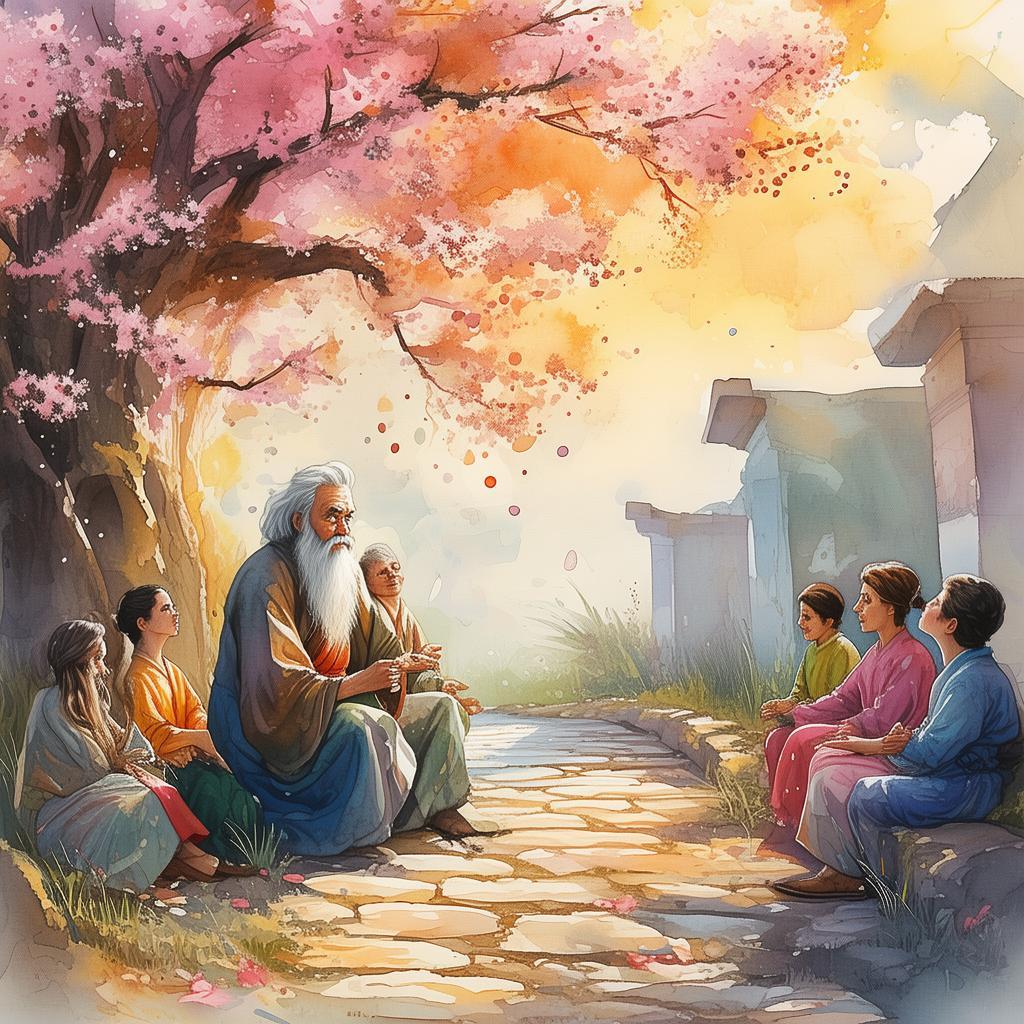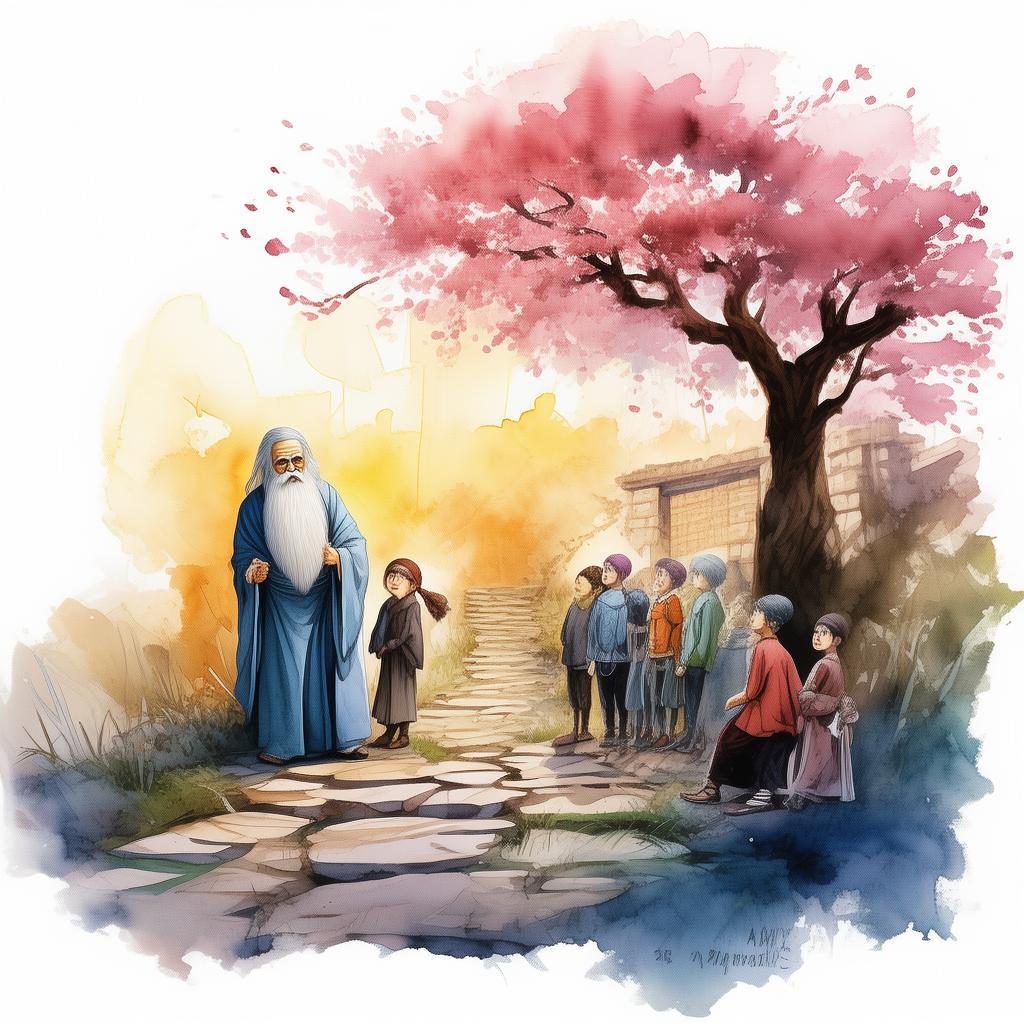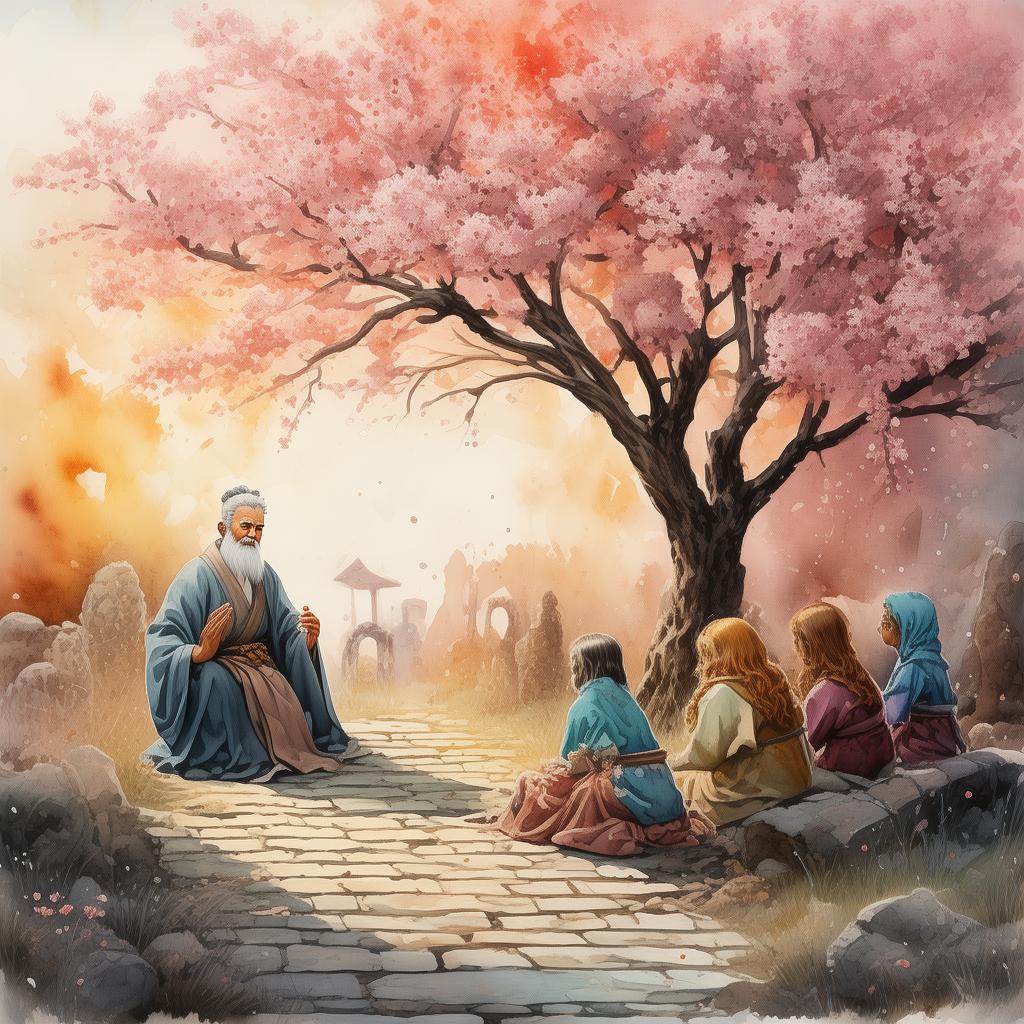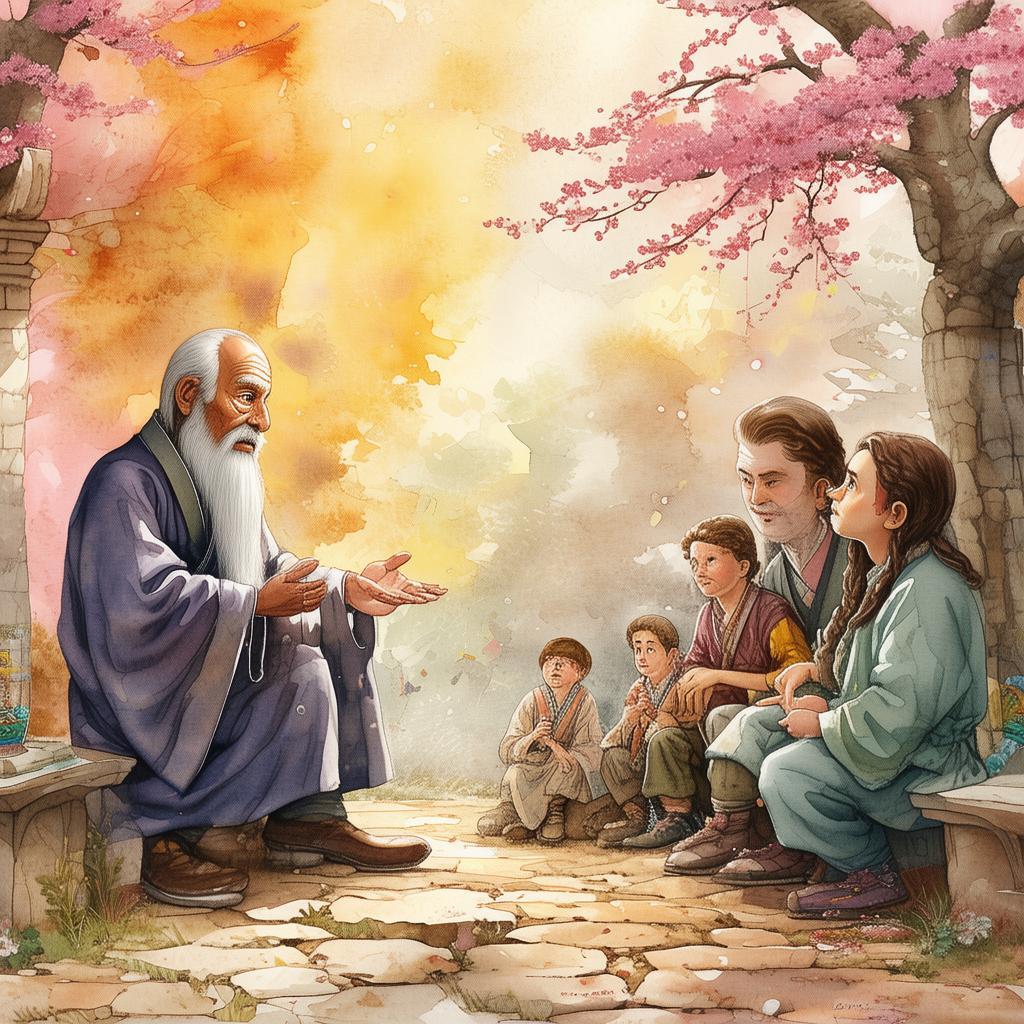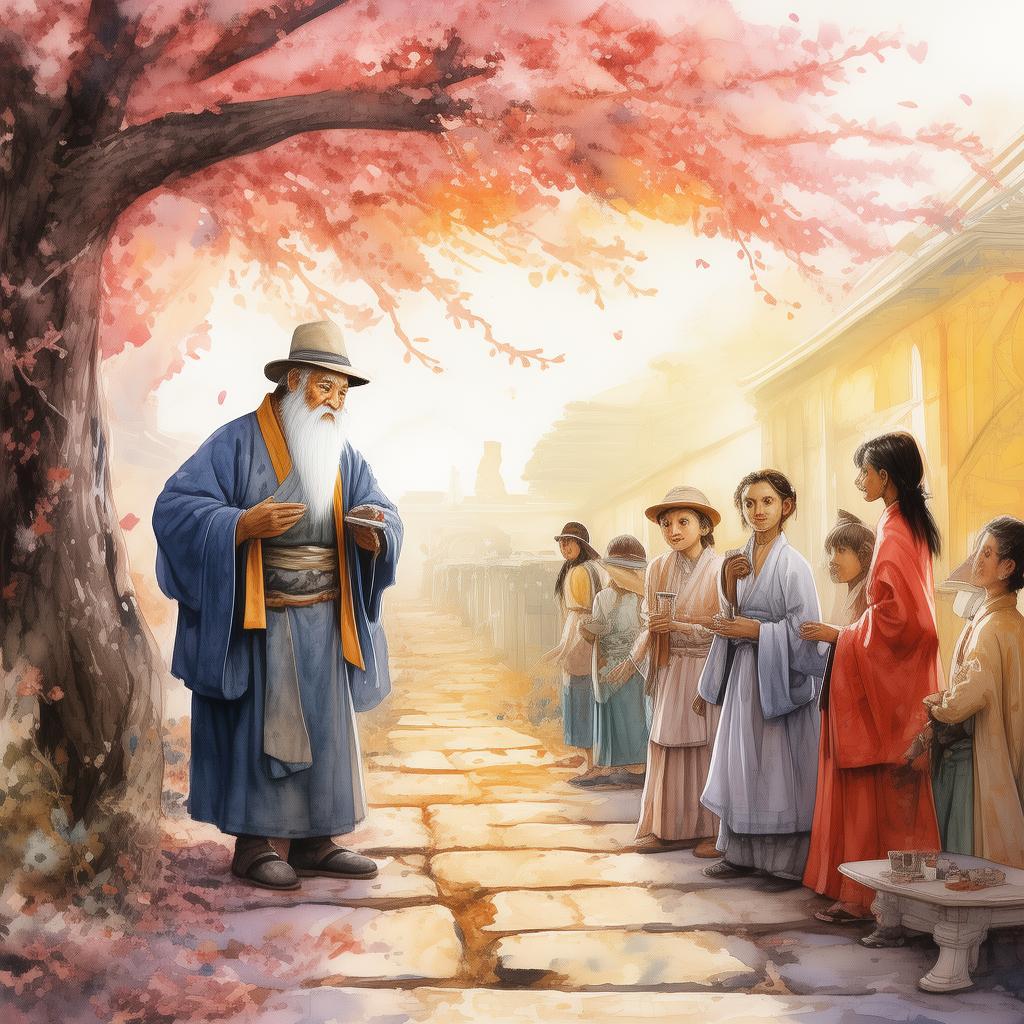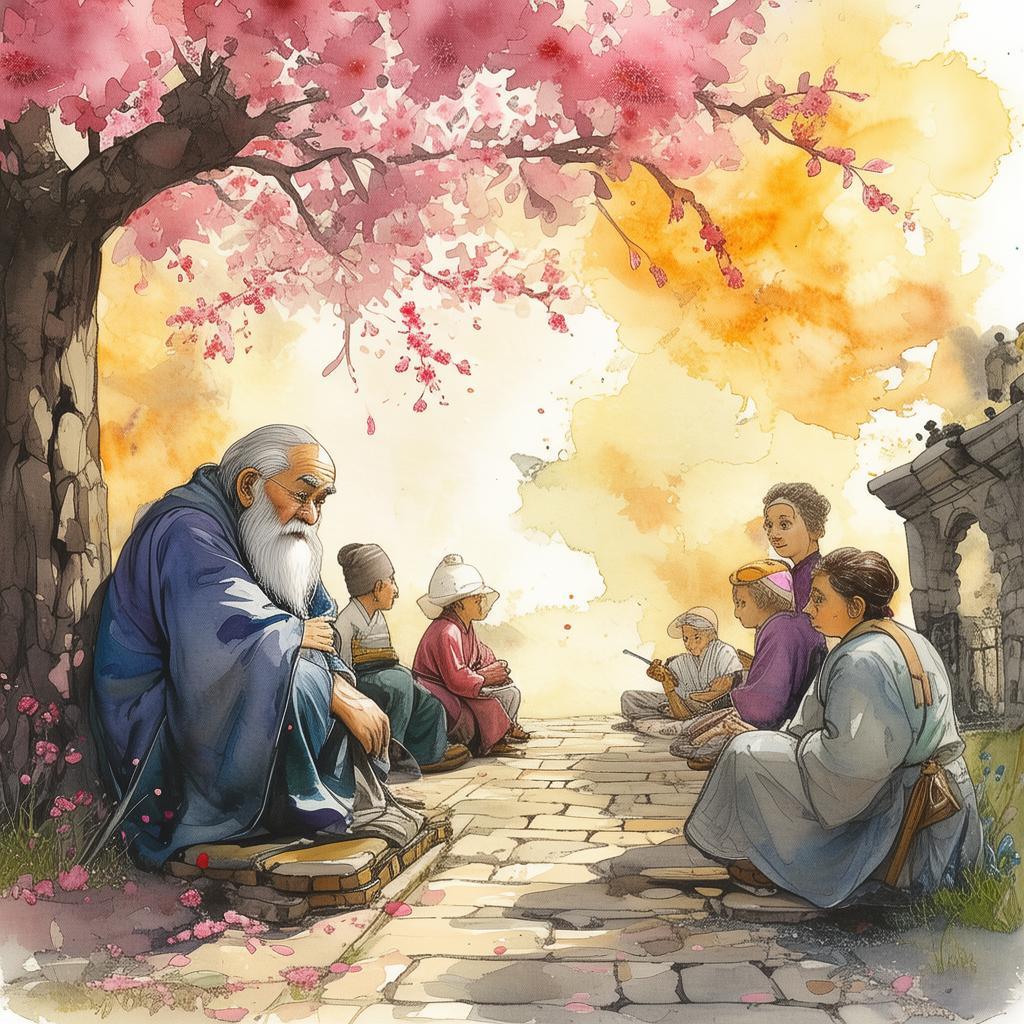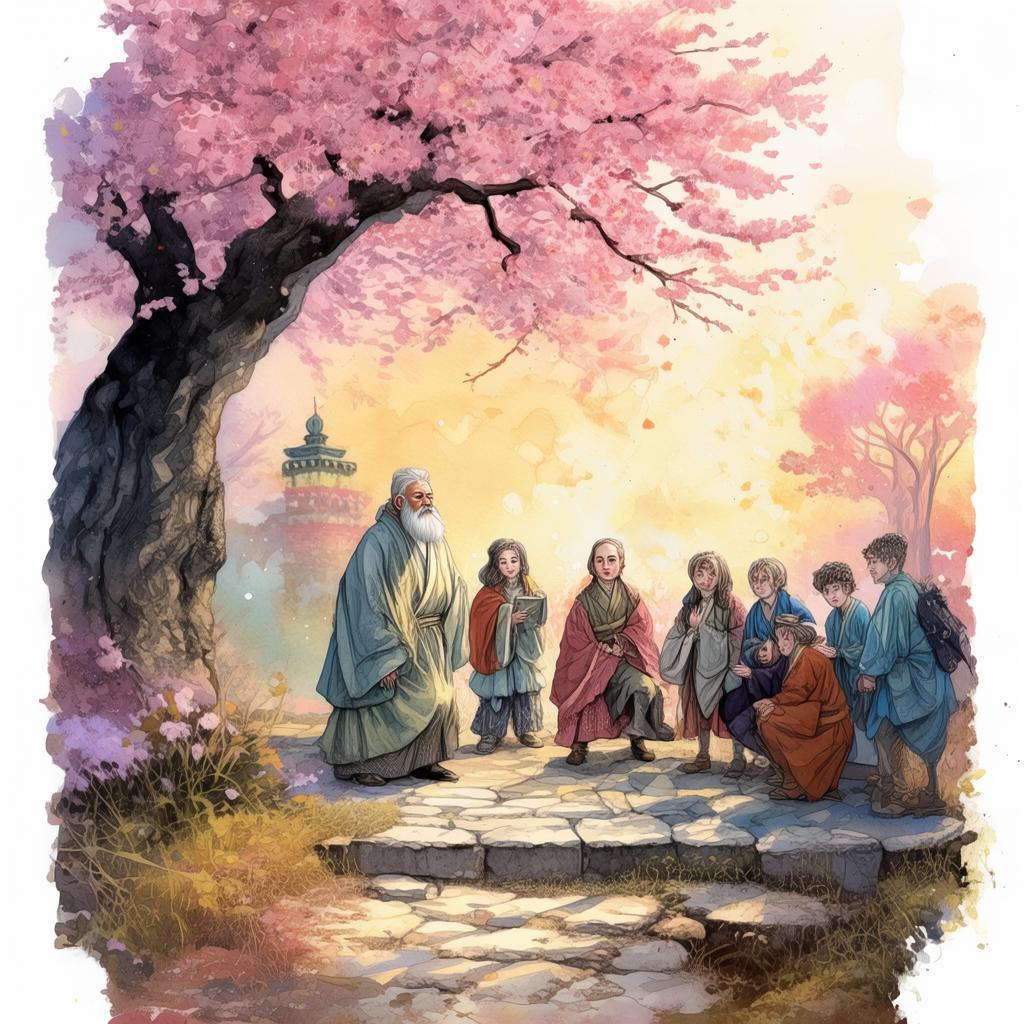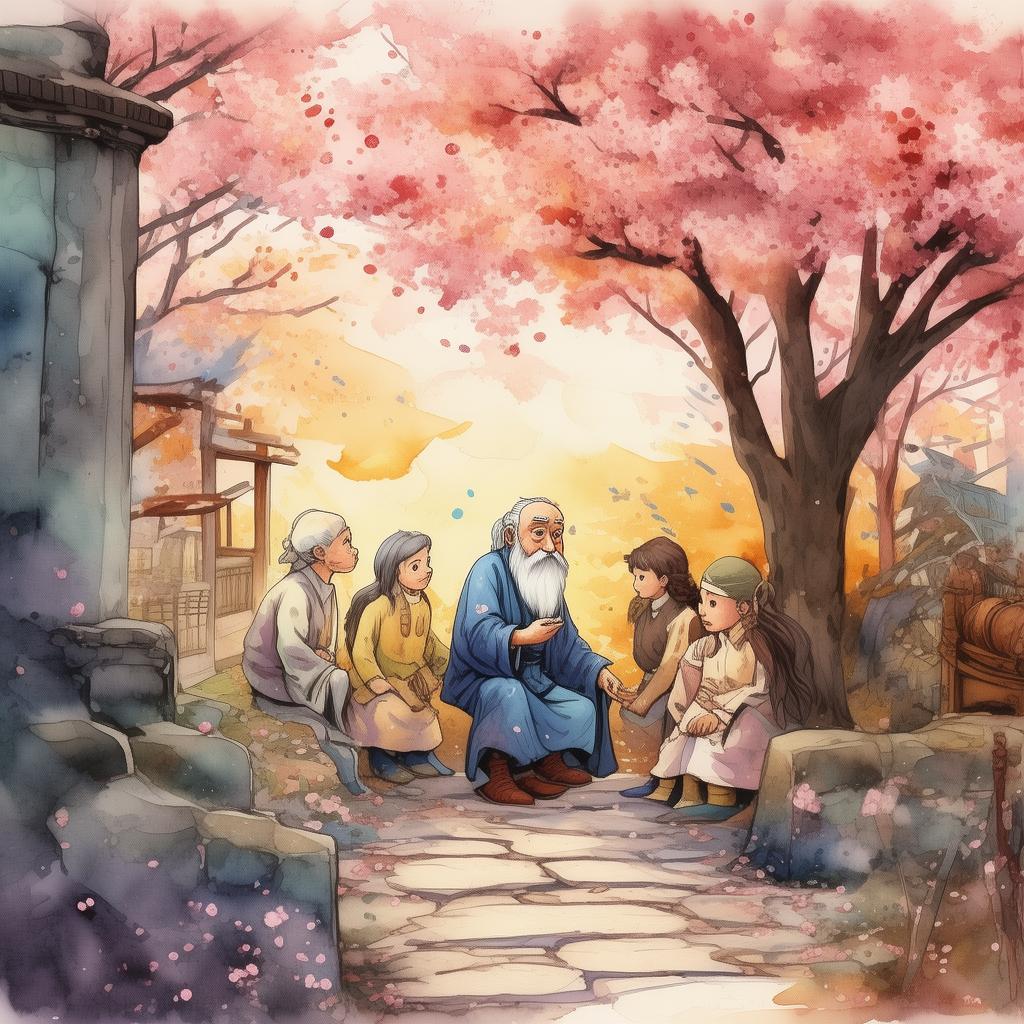The Last Brushstroke of Truth: A Satirical Journey into Illusion
In a world where reality is as malleable as the canvas before an artist, there lived a master named Luo Qing. Luo Qing's paintings were more than mere works of art; they were windows into other dimensions, illusions that blurred the lines between what was real and what was imagined.
One evening, Luo Qing, a figure shrouded in mystery, approached the gallery owner, Liang Zhen. "There is one more painting I wish to add to your collection," he whispered, his voice tinged with a sense of urgency. "It is the final piece of my career, the one that will reveal the truth behind all my illusions."
Liang Zhen, intrigued and slightly apprehensive, agreed to the painter's request. Days later, Luo Qing presented a stunning, life-sized canvas. It depicted a serene landscape, the sun setting in hues of orange and purple, casting a gentle glow over the viewer. Yet, there was something unsettling about the painting; something that felt off.
As Luo Qing began to speak, the room grew hushed. "This painting," he said, "is the closed picture, a satire of reality itself. It reveals the truth behind our perception. Look closely, and you will see that what appears real is but an illusion, and what appears false is, in fact, the truth."
The gallery owner, Liang Zhen, stepped forward, his eyes fixed on the canvas. He noticed the subtlest of details—threads in the grass that didn't belong, the faint outline of a face in the sunset, and a figure standing on the hill that seemed to move with the viewer's gaze.
"Look at the brushstroke," Luo Qing continued. "It's not the one I usually use. This is a parody of my own technique, a reflection of my internal conflict. I have painted this world to be as it appears, but within that appearance lies a paradox—a truth that will challenge your perception of reality."
The crowd murmured, some confused, others intrigued. As the night deepened, a figure began to form in the landscape. It was Luo Qing himself, the painter, now part of the canvas, blending seamlessly into the natural scenery.
"This figure," Luo Qing said, "is you. I have painted you into this picture, inviting you to question the very foundation of your perception. What you see as real, what you feel, is but a part of the greater truth, the truth that reality is fluid, ever-changing, and dependent on your perception."
As the crowd watched, the figure of Luo Qing moved, the brushstroke on the canvas altering with each step he took. The illusion was no longer a static image; it was a living, breathing satire of the world as we knew it.
In an instant, the sun dipped below the horizon, casting a final, ethereal glow over the scene. The brushstrokes began to fade, revealing a stark white canvas in the dim light. Luo Qing stood in the center, now a shadowy figure against the backdrop of emptiness.
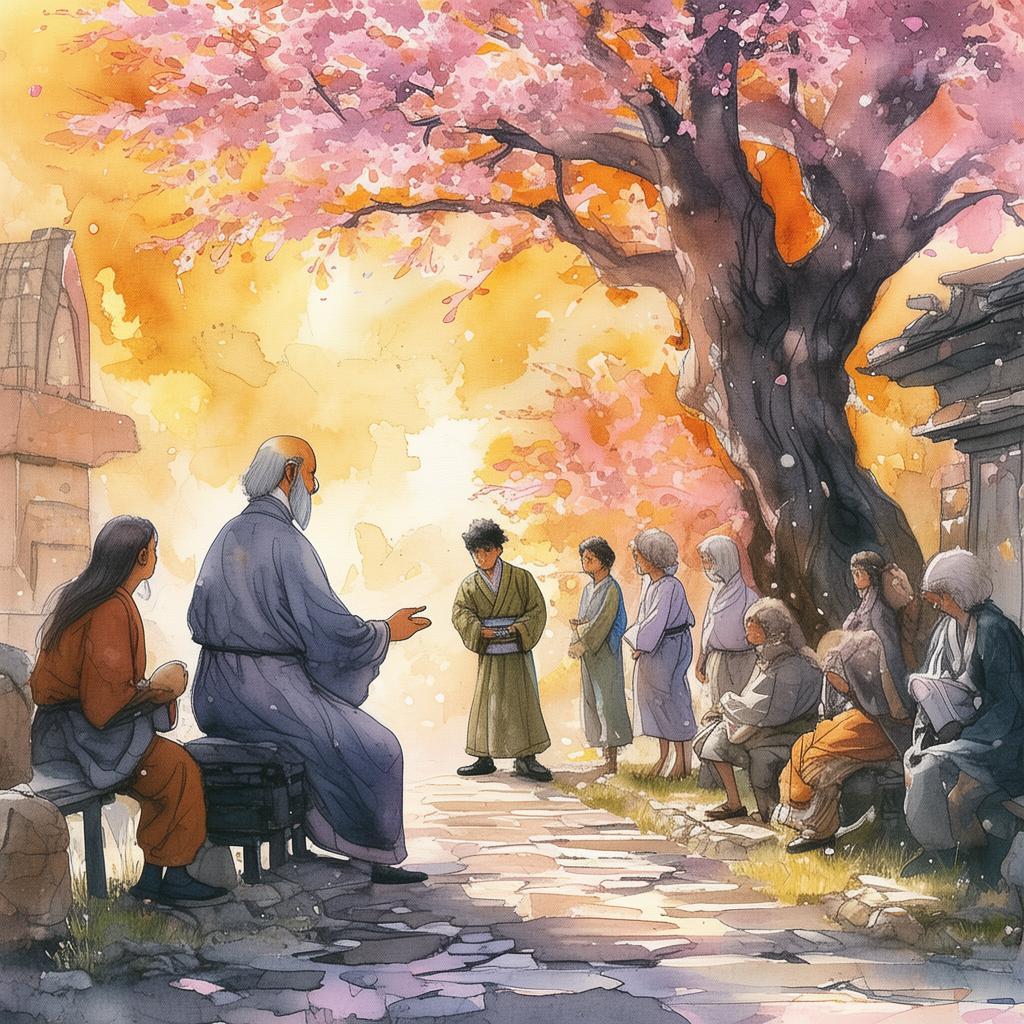
"You are all the painters of your own reality," Luo Qing's voice echoed in the silent room. "You must ask yourselves: What is real, and what is not? And in that question, you may find the truth that has been hidden in plain sight."
The crowd dispersed, each leaving with a question burning in their hearts. The painting remained in the gallery, an enigma that defied explanation, a satire of reality that continued to challenge perceptions long after the gallery doors had closed.
In the days that followed, whispers spread through the city about Luo Qing and his final painting. People began to notice the threads in the grass, the figures in the sunset, and the subtle changes in the environment that shifted with their gaze. They realized that the painting was not just a satire of the artist's technique but a reflection of the world's inherent paradox.
The Last Brushstroke of Truth became more than a painting; it was a conversation, a dialogue between the audience and the artist. It became a catalyst for discussions on perception, reality, and the ever-elusive nature of truth. Luo Qing's final masterpiece stood as a testament to the power of art to transcend the confines of the canvas, inviting viewers to explore the depths of their own understanding and perception.
✨ Original Statement ✨
All articles published on this website (including but not limited to text, images, videos, and other content) are original or authorized for reposting and are protected by relevant laws. Without the explicit written permission of this website, no individual or organization may copy, modify, repost, or use the content for commercial purposes.
If you need to quote or cooperate, please contact this site for authorization. We reserve the right to pursue legal responsibility for any unauthorized use.
Hereby declared.
